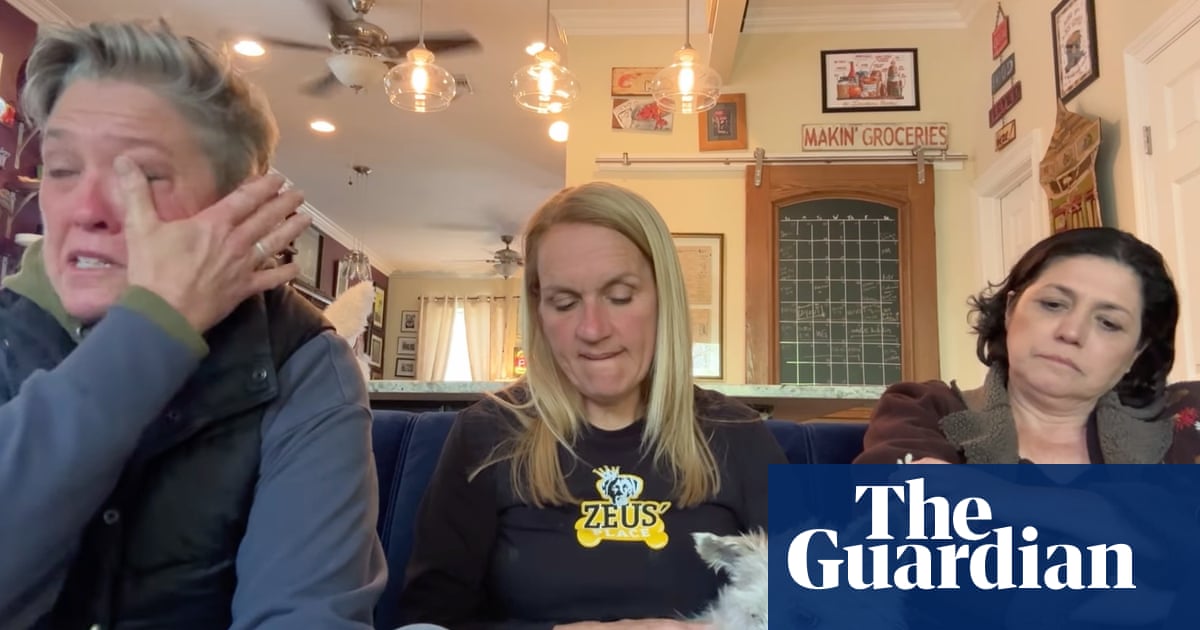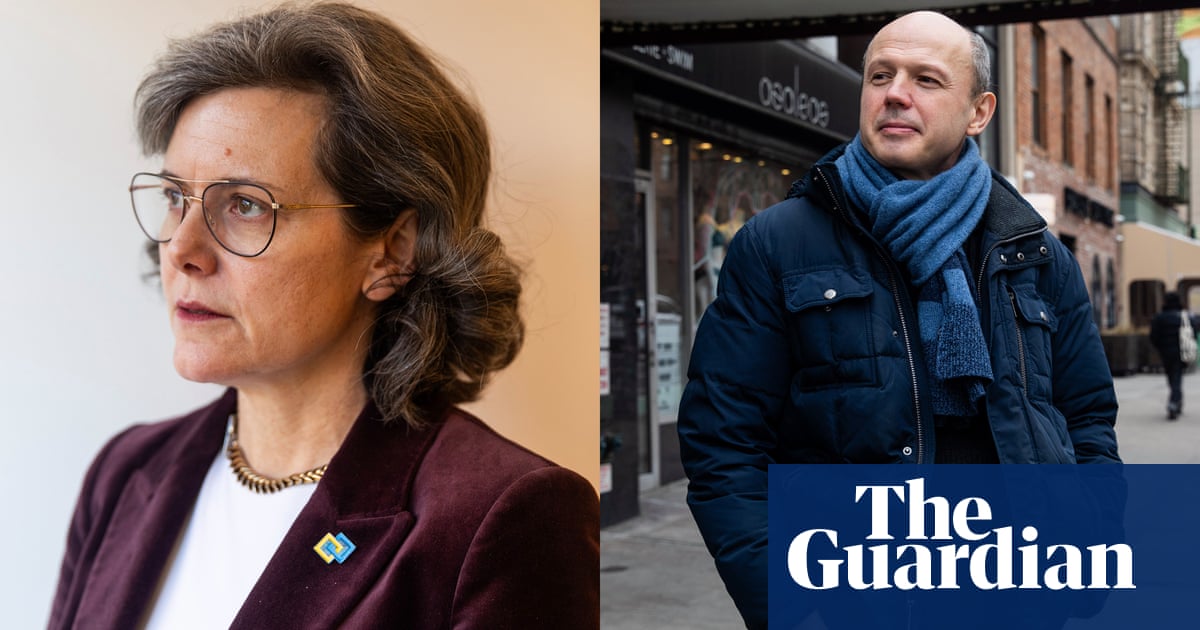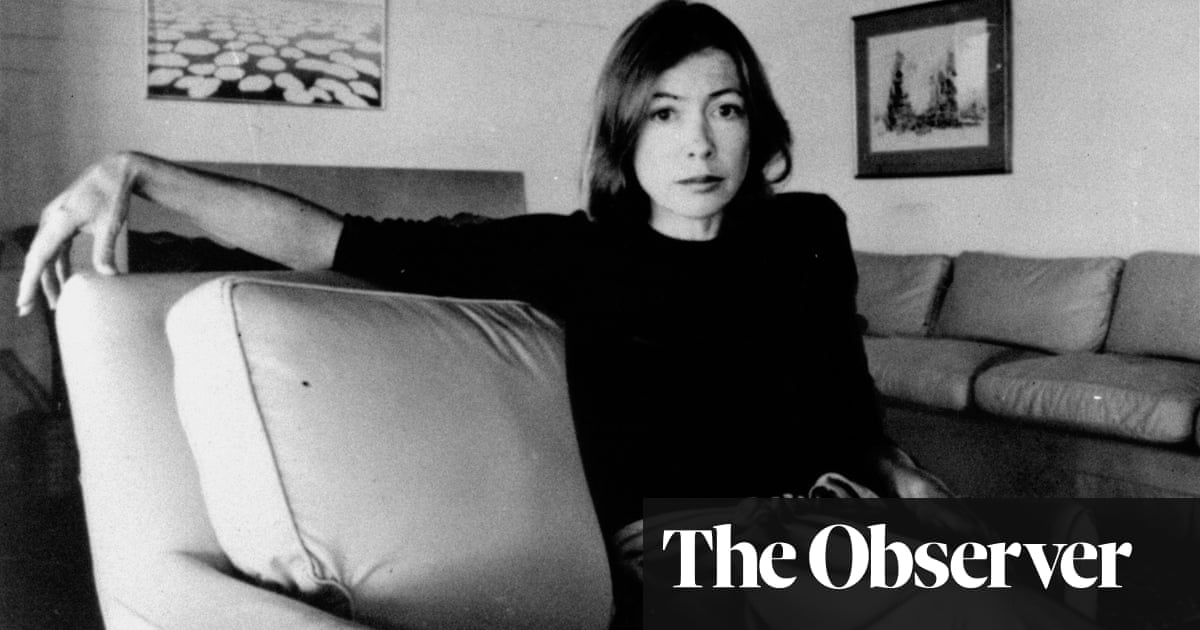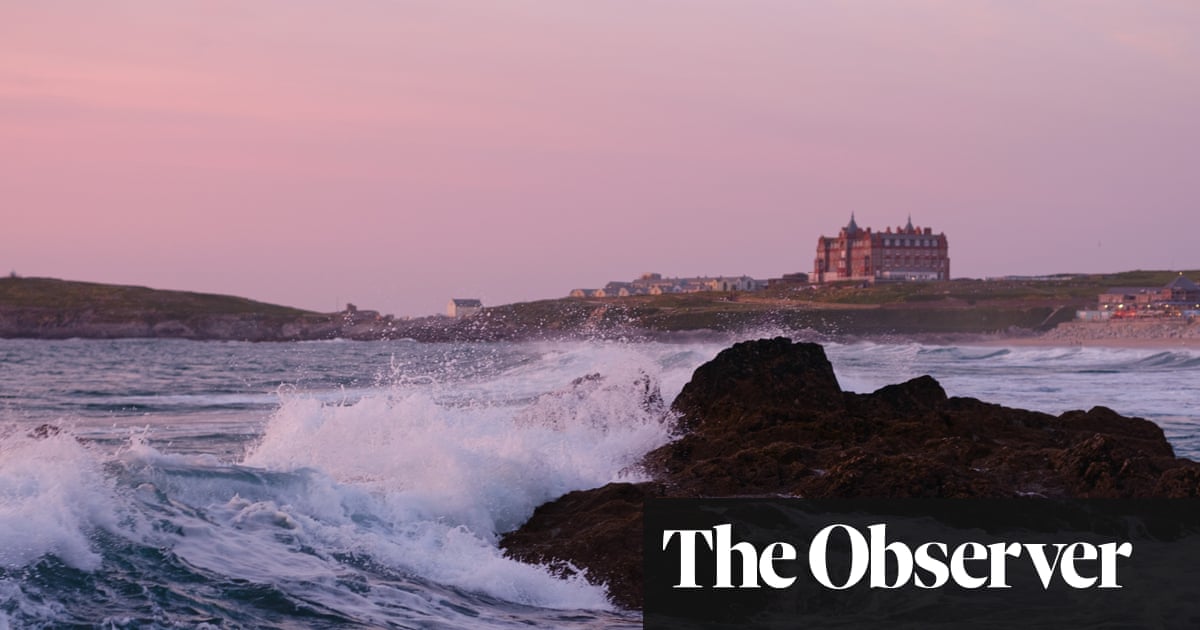It was a daunting task, with little likelihood of success. An adventurous but anxious graduate researcher without any experience of looking after birds was dispatched to the wilds of upstate New York to become a human eagle mother: feeding, teaching – and keeping alive – three helpless eagle chicks.
Tina Morris was to camp alone beside their artificial nest, find them food, track them when they began to fly, keep them away from danger and rescue them if they got into trouble. If they survived to adulthood, northwest America would begin to be repopulated with its national bird, the bald eagle, a majestic, much-loved raptor that had been driven to the brink of extinction by the 1960s.
Each morning, Morris, who was 26 at the time and the only female conservation biologist in her team, had to feed the eagles by climbing 35ft of scaffolding to an aerial hide beside the artificial nest platform where the young eagles had been placed. There was one problem: she was terrified of heights. On the very first climb, she was almost paralysed by panic. But she steeled herself, knowing that she had to do it.

“I said, ‘Yes, I would love to study eagles’ having no idea what I was getting myself into,” says Morris today, almost 50 years later, happily retired and on holiday – visiting poet Laurie Lee’s former local, a gorgeous old pub in the Cotswolds. With self-effacing modesty, Morris is reflecting on her small role in a stupendous conservation success story. “It was like I was on a train and I wasn’t quite sure where it was going or what I was doing, but I had to keep going. I couldn’t look back. Or look down. I had a lot of fears. I’d never been around big birds before and my fear of heights was very real. But I knew I could not admit I was afraid. That was part of being a woman in the male world. You can never blink. Don’t ever say, ‘I can’t possibly do that,’ because there’ll be a man behind me who’ll say, ‘Well I can do it.’ I was well aware of that.”
She didn’t look down and finally made it to the aerial hide. Here, she had to keep herself concealed from the eagles, so they wouldn’t become imprinted and learn to associate people with being fed. Then she fixed fresh food – scavenged roadkill or carp that she’d caught – to a barbecue fork taped to a long stick, and lifted it into the nest. The eagles tore into her meals. And day by day, they grew.
Morris was charged with making a success of a bold experiment. She was working for the Peregrine Fund, a pioneering conservation programme run by Professor Tom Cade from Cornell University. Cade, a 20th- century legend in conservation circles, had removed extra chicks from peregrine nests and used the falconry technique of “hacking” to raise the young in new locations in the wild. Slowly, peregrine numbers were starting to recover in the United States. These brilliant predators, and other birds of prey, had been decimated, first by persecution and then by the agricultural use of DDT and other pesticides, which caused their egg shells to become so thin that fledging success rates plummeted. The bald eagle was another victim: 400,000 eagles soaring in the skies above the continental states in the 1800s had become just 417 nesting pairs by 1963.
By the mid-1970s, Cade decided to try the same techniques with the bald eagle. But this new trial was an almighty rush because conservation authorities decided they must reintroduce the emblem of the nation to northeast America for the bicentennial celebrations of 1976. The trial had to be done quickly – and in secret. There was a lot of pressure. These weren’t just any old bird of prey, they had been on the national seal since 1782.
“There was a lot of pressure,” says Morris. “What’s going to happen if I can’t find that bird that just flew over the hill? It wasn’t just a bird – I would’ve lost one of the nation’s birds.”
Throughout the long summer of 1976 and again in 1977, Morris camped out in Montezuma National Wildlife Refuge below the huge nest of sticks she had built for the chicks. She’d had a circuitous route in conservation biology. Her passion for saving animals began in early childhood. Her family dogs ravaged rabbits, chipmunks and birds; she would admit survivors to her animal hospital of cardboard boxes in the bath. “Using eye droppers and moistened hardboiled egg yolk or chopped up earthworms, I nursed them until they died,” she writes in her memoir, Return to the Sky. Very occasionally they lived and she released them.

After graduating in anthropology, a year’s work in a zoo convinced her that animals belonged in the wild. “I thought, whatever I do after this, I’ve got to be working to get them out of these cages, not just propagating the species within the bars of the cage. That’s why I loved the Peregrine Fund, because that’s what they were doing,” she says. She read about Cade’s work restoring animals to the wild and talked her way into studying at Cornell.
Morris’s time as eagle mother was perpetually challenging. Despite her abhorrence of animal cruelty, she had to quickly learn to bludgeon carp to death with a heavy axe handle to supply the chicks with fresh food. Her first two eagles were known as W1 and W2, because they came from a nest in Wisconsin. Soon they were joined by a third, M3, who had been found by the climbing team with a broken leg, hours from death, in a nest in Michigan. His leg had healed in captivity. While W1 and W2 were older, wary and wild, M3 was easier company. “He was such a wonderful bird, because he’d been handled by people, but he wasn’t imprinted, and so I really loved this bird and I wanted him to succeed,” she remembers.
Morris camped with her two pet dogs, but was surprised to find loneliness was a big challenge in those early weeks. She filled her day with tasks: finding food and watching the young eagles, meticulously analysing their behaviour to learn if her strange, arm’s-length surrogacy could be an effective substitute for a real eagle mother. Watching them from 3ft away, but concealed in her hide, was “a lesson in monotony, occasionally peppered with wonder,” she writes.
One challenge was how to subdue the growing birds without being lacerated by their sharp talons or lethal beaks, so they could be fitted with identification bands. M3 was given a silver band labelled 03142. Radio tags were also fixed to the young birds. Morris’s innovation was to cut up her blue jeans: a young eagle fitted perfectly inside the leg that acted like a straitjacket.
The biggest test came when the eagles learned to fly. We imagine a mighty eagle simply soars into the sky, but the fledglings often flew short distances before crash-landing, unable to get themselves airborne again. Morris had to track them via the radio tags, shadowing them like an over-anxious parent, making sure they came to no harm. This was easier said than done.
On W2’s first flight, he headed straight down into a vast, inaccessible marsh. Morris had to wade through the swamp to find the grounded young eagle. “If I didn’t find him, I was pretty sure he wouldn’t survive the night,” she says. Foxes, coyotes, a racoon or even a snapping turtle could kill or injure an unaccompanied grounded eagle. “They are totally dependent on their parents to protect them on the ground. If I had been an eagle, I would perch nearby and drop fish in front of them until they’re able to get themselves out of that predicament. It might’ve taken three or four days.”

Eventually, the tracker led her to W2, “sitting in the middle of a pool looking totally bewildered, if an eagle can look bewildered,” she remembers. She approached him slowly-slowly and quickly threw a blanket over him. “Then it was matter of grabbing the right places, making sure the beak and the talons were as far away from me as possible. I held him like a football all the way back to the road where my Jeep was.” Back below the nesting platform, she tucked him under her arm again and climbed up one-handed. “By then I was pretty good at that climb, I’d been really practising,” she laughs now.
And so she followed the eagles around the wilderness reserve, watching their first kills and keeping them safe. One day in late September, all three birds simply flew away, as young birds do. The radio tags had a limited range and bald eagles can traverse hundreds of miles. It was not known where the birds had gone. But the “hacking” had been a success. All three had headed off into northeast America as fully fledged independent, wild birds.
The return of the bald eagles could now be publicised as a good news story and the media desperately wanted the tale of the young woman who had secretly tended to the chicks alone in the wilderness. Morris was besieged by interview requests, but drew back when she realised magazines wanted to put her and not the eagles on their covers. “I felt very strongly that the birds should be the story. They just didn’t get that.” She rejected an invitation to appear on a TV show called To Tell the Truth; only now, years later, does she regret not taking part; her 15 minutes of fame would have amused her grandchildren.

Morris reared another four eagles in the summer of 1977, this time assisted by a larger team from the state Department of Environmental Conservation (DEC). The trial judged a success, the DEC took over the following year. Given she’d overseen such a success, a high-profile PhD seemed inevitable, but Morris had met her husband, Larry, by now and wanted a project she could do in the local area. Further bald-eagle studies would have to be elsewhere, but Cade encouraged her to pitch testing the same hacking techniques with the endangered loggerhead shrike instead. Surprisingly, no funding agencies would support this and Morris had to settle for shrike survey work. Was this discrimination? “The discrimination wasn’t against me as a woman, it was what I chose to do. Nobody wanted to pay for shrike research. All the funding agencies said if you just stayed with eagles, we’d be happy to fund you.”
Morris became a full-time mother of four children and she and Larry rewilded a farm before the term became fashionable. Later, she taught biology at high school, always passionately seeking to get students out into nature, for education and inspiration.
As the years passed, she often wondered about “her” eagles, but accepted she would probably never know their fate. Truly wild creatures don’t keep in touch. Still, she could be comforted that her work helped spark a remarkable comeback. Thanks to reintroduction programmes like hers, today there are 70,000 bald eagle pairs flying free across the continental United States plus another 30,000 in Alaska.
And then, one June day in 2015, a remarkable thing happened. Morris was clearing her desk after a day teaching when a press release dropped into her inbox headlined “Oldest Bald Eagle ever in US, 38, found dead in NY”. Spotting a roadside rabbit, this eagle had dived and seized the creature, but not seen an approaching vehicle, which struck it dead. Someone noted its aluminium band: 03142. It was M3, the chick with a broken leg that Morris had reared and followed back in 1976.

She felt a whoosh of emotion. “It was really, really amazing,” she says now. From his tag, it was established that M3 had been part of a settled breeding pair for three decades. He alone had fathered around 70 chicks. “He lost one female and then got a second one, and stayed loyal to that nest, which was incredible.”
And so M3 became “the inspiration” for Morris to tell her story. “Imagine a bird with everything going against him. He wasn’t even supposed to survive; coming out of his nest in Michigan with a broken leg. If the climbers hadn’t been up there at that time, he would’ve been dead,” she says. The eagle reintroduction was “a success story that had proof of success in this one bird. He embodied it all”.
Today, Morris wants to celebrate that success – and unsung heroes such as Professor Cade’s right-hand man Jim Weaver, who was so supportive of her efforts – but also warn everyone that the hard-won restoration of wildlife is not guaranteed to endure. She is worried about the wildlife-killing potential of new chemicals and other pollutants, as well as the bigger issues of habitat loss, population growth and overconsumption. “I want people to know we went through a really bad time with DDT and it can happen again, it will just be a different substance and a different threat,” she says. “The eagle isn’t out of the woods yet. There are a lot of threats. And if those threats aren’t taken care of, their numbers will soon go back down again.”
Return to the Sky by Tina Morris is published by Chelsea Green for £22

 3 months ago
43
3 months ago
43













































